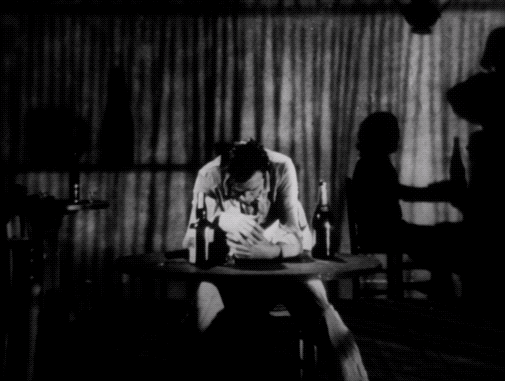

Have you ever seen any of the early Bela Lugosi movies? Audiences must have been really freaked out by his eyes because the movies kept pushing that stare as the ultimate in horror (Dracula had arrived the year before). White Zombie was the first feature film about zombies, a genre now so common you forget that there had to be a first. The film, now celebrating its 87th birthday, is streaming on Amazon Prime and since it's only 66 minutes long we decided to zip right through yesterday...
The story begins quite like Dracula (1931).
A young naive couple arrives by carriage in a "spooky" foreign land (in this case Haiti) after which the fiancée is mentally snatched by Bela Lugosi's vampire...er, witch doctor / zombie master. The title 'why it gotta be white?' and the setting are instantly problematic -- the first site that spooks the young couple is a group of Haitians doing a burial ritual in the middle of the road. These Haitians are actually correct about their suspicions of the evil that's going down and the main characters never once acknowledge this, even after they see the evil for themselves, always calling the natives "superstitious".

Okay one more note on race only because we're hoping someone with a knowledge of Old Hollywood history can answer. Was it common to have white actors in black-face in films in which actual black actors also appear? I don't remember seeing this before. It makes no sense, even once you try and place yourself in old school racially insensitive contexts. One of the first characters who speaks is the coach driver taking the lovers Madeline (Madge Bellamy) and Neil (John Harron) to their destination. He's played by an uncredited actor Clarence Muse (who had a long Hollywood career, starting in silent films and working all the way until the year of his death -- his last film was The Black Stallion in 1979 released a week after he died). The coach driver warns the couple about the living dead, 'ZOMBIES!'. They are frightened but also don't believe him. Yet later in the film, the only other time we meet a black character, also for expository reasons, it's a white actor (Dan Crimmins) in black face. What?!?
Anyway, the engaged couple meets the witch doctor (Bela Lugosi) immediately in this first scene when he stops their coach and unnerves them.

Don't you just adore old movie acting? The primal simplicity of gesture-acting took a while to fade from the movies after the medium's silent origins but it's still so beautiful. At least to our eyes.
The dastardly villain steals the bride-to-be's scarf which he will later use in a voodoo-like ritual, wrapping it around a candle he's carved in human shape to "kill" the woman. This all happens very early in the movie but we don't want to spoil anything else as the plot is actually simple but wacky horror fun.
Once Madeline "dies" (though these zombies are not quite the kind of zombies we'll later get in cinema) the film gets crazier and creepier and more fun. No subplots, no filler. Just the madness of this particular situation (ah, for the glory days of short running times. If only some hot new filmmaker would embrace them in 2019)

Though very early 30s movies sometimes have clunky dialogue (before the rat-a-tat genius of screwball comedies just around the corner) their visual expressive can be notable. White Zombie has some creativity in this department with split screens, double exposures, shadowy cinematography and wonderful use of production design elements to heighten the mood. There's a beautiful shot of the zombie bride walking down stairs in the witch doctor's Dracular-like castle that's viewed through some sort of lattice, which is almost like watching her through a clover-shaped keyhole.
Or take this expressive shot above of the naive young business man who arrived in this remote land to do business but ended up losing his bride to evil supernatural forces (again, he's basically Johnathan Harker and she's Mina). In this sequence he's drowning his sorrows in alcohol. He can't shake the grief over his corpse bride. While he's weeping, happy couples dine and dance in shadows all around him, perpetually reminding us of his unthinkable loss.
If you're interested in Old Hollywood horror, White Zombie is worth a curiousity watch, and not just because it proved influential inspiring a modern band name (yep, Rob Zombie is a fan) and various zombie pictures after it. You can also spot various sets reused from other silent and early sound films like Frankenstein (1931) and The Hunchback of Notre Dame (1923).